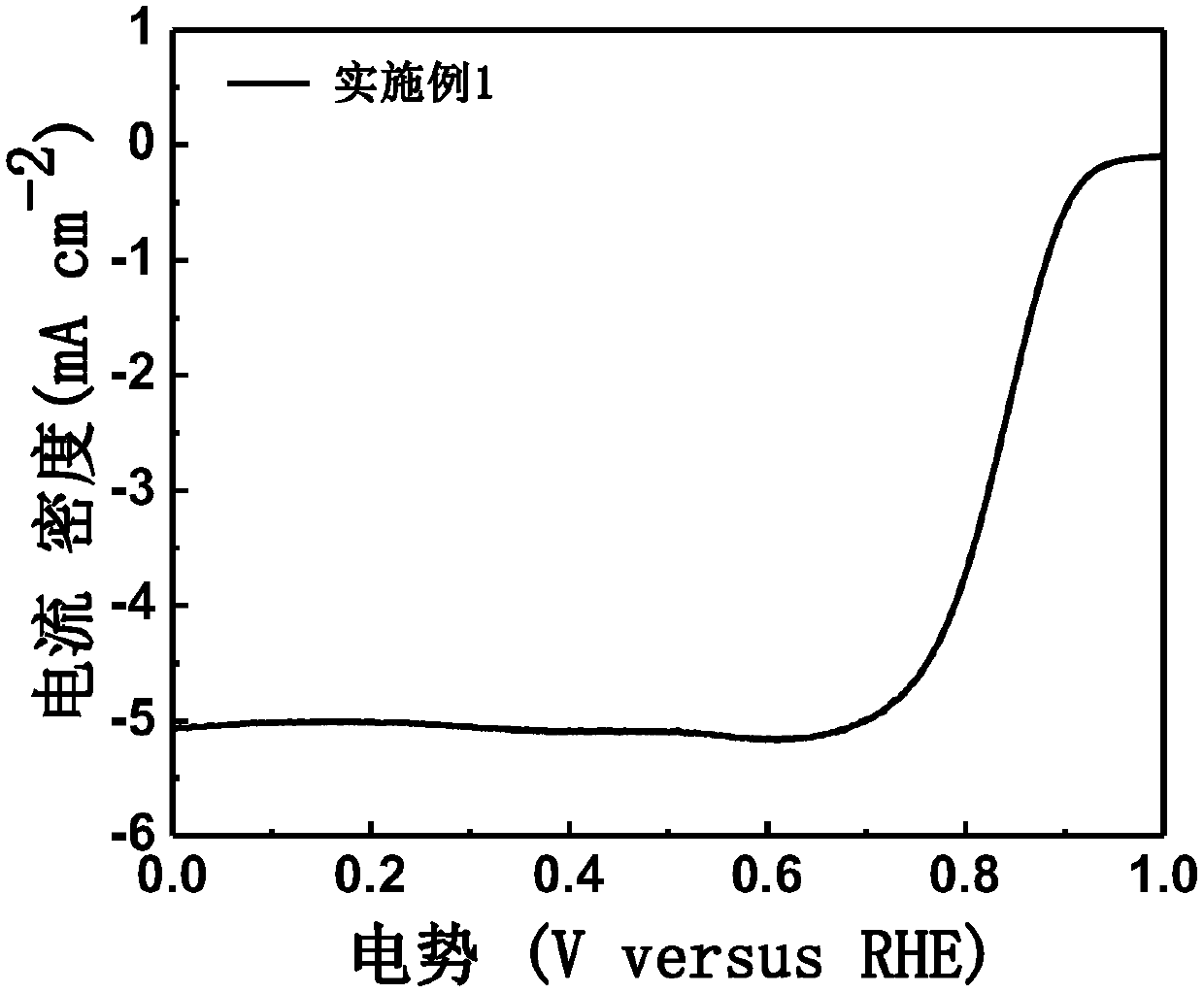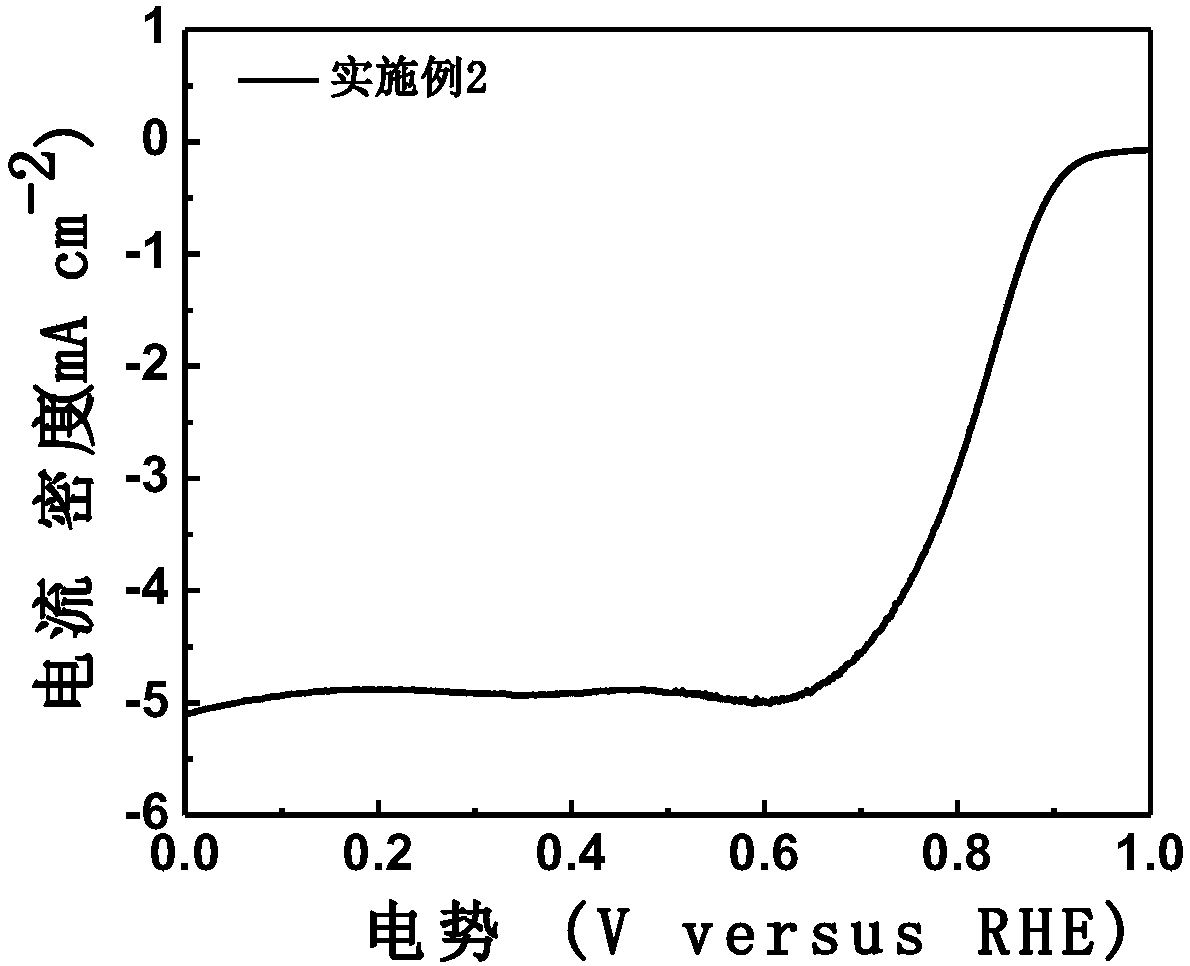Nitrogen-sulfur double-doped non-metallic carbon-based oxygen reduction catalyst with grading holes and preparation
A double-doped, non-metallic technology, applied in structural parts, electrical components, battery electrodes, etc., can solve the problems of low catalytic performance, poor stability, high cost and large-scale promotion of metal-air battery catalysts, and promote electron transfer. and mass transfer, good stability, and the effect of promoting the oxygen reduction reaction process
- Summary
- Abstract
- Description
- Claims
- Application Information
AI Technical Summary
Problems solved by technology
Method used
Image
Examples
Embodiment 1
[0032] Step 1): Weigh 2.659g (15mmol) of thiocyanuric acid, 1.135g (1mmol) of β-cyclodextrin, and 0.5ml of concentrated sulfuric acid (96-97wt%) into 30ml of deionized water, sonicate for 30min until they are evenly mixed , and then transferred to a 100ml eggplant-shaped bottle, and heated up to 100°C while stirring. After the water solvent was completely evaporated, the temperature was raised to 160°C, and the reaction polymerization was carried out for 10 hours. The resulting product is taken out and ground to obtain an organic polymer material containing carbon, nitrogen and sulfur.
[0033] Step 2); put the organic polymer material into a porcelain boat and calcinate it in a high-temperature tube furnace with a gas flow rate of 100mlmin -1 Argon gas, first raise the temperature to 200°C at a heating rate of 5°C / min, hold for 1 hour, then raise the temperature to 350°C at a rate of 1°C / min, hold for 2 hours, then raise the temperature to 1000°C at a heating rate of 5°C / min,...
Embodiment 2
[0035] Step 1): Weigh 2.768g (15mmol) of chloronitrile, 2.614g (15mmol) of 1,3,5-benzenetrithiol, 1.135g (1mmol) of β-cyclodextrin, 0.5ml concentrated sulfuric acid (96- 97wt%) was added to 30ml of deionized water, ultrasonicated for 30min until uniformly mixed, then transferred to a 100ml eggplant-shaped bottle, and heated to 100°C while stirring, and after the water solvent was completely evaporated, the temperature was raised to 160°C, and the reaction polymerization was carried out for 8h. The resulting product is taken out and ground to obtain an organic polymer material containing carbon, nitrogen and sulfur.
[0036] Step 2): Put the organic polymer material into a porcelain boat and calcinate it in a high-temperature tube furnace with a gas flow rate of 100mlmin -1 Argon gas, first raise the temperature to 200°C at a heating rate of 5°C / min, hold for 1 hour, then raise the temperature to 350°C at a rate of 1°C / min, hold for 1 hour, then raise the temperature to 900°C a...
PUM
| Property | Measurement | Unit |
|---|---|---|
| specific surface area | aaaaa | aaaaa |
Abstract
Description
Claims
Application Information
 Login to View More
Login to View More - R&D
- Intellectual Property
- Life Sciences
- Materials
- Tech Scout
- Unparalleled Data Quality
- Higher Quality Content
- 60% Fewer Hallucinations
Browse by: Latest US Patents, China's latest patents, Technical Efficacy Thesaurus, Application Domain, Technology Topic, Popular Technical Reports.
© 2025 PatSnap. All rights reserved.Legal|Privacy policy|Modern Slavery Act Transparency Statement|Sitemap|About US| Contact US: help@patsnap.com



